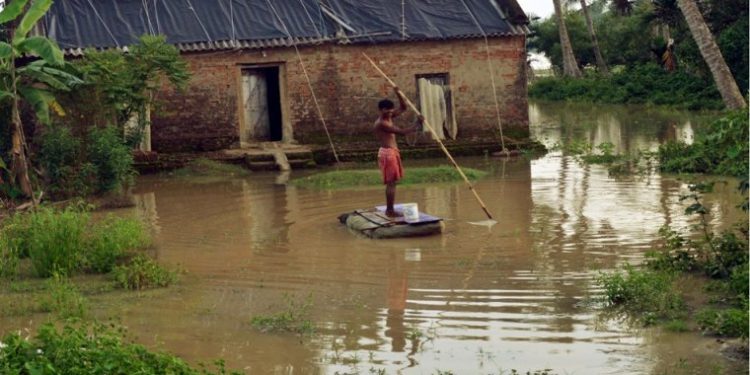Natural disasters such as floods and cyclones are routine in Odisha. There has been hardly a year when we have not seen a natural calamity, big or small. The frequency of such disasters has gone up with time due to fast-paced climatic changes. Since the Super Cyclone in 1999, Odisha has seen half a dozen major cyclones and the government has given a good account of itself with regard to its handling of pre- and post-cyclone situations. The state government has gathered enough expertise in handling the situations. Over the years, it has evolved a tested template to minimize the loss of lives and properties due to cyclones. However, the same is not the case with regard to floods. The government’s record with regard to flood management has left much to be desired. Floods are regular phenomena here. Breaches on the river embankments are regular. The administration has not been able to identify the vulnerable areas even though breaches take place year after year. Even after they are identified, repairs do not happen. Worse, after repairs are carried out they are not failsafe against floods.
Odisha is an agrarian economy. Over 75 per cent if its people depend on farming for their living and livelihood. This number is likely to go up as lakhs of unemployed youths, who had gone outside the state for livelihood, have returned home. Jobless for the most part of the year and a majority of them not willing to go back to their workplaces, they have very little option but to turn to farming. A bulk of the farmland across the state is rain-fed. Except for western Odisha, most of the farm land in the state are non-irrigated and hence depend on monsoon. Inasmuch as paddy is the main crop here, monsoon and the consequent floods make and break the fortune of farmers here every year. The state is blessed with a network of large rivers. However, an absence of proper infrastructure on rivers to tame floods and similar calamities has rendered them unruly. Floods in September and October damage grownup crops. Lakhs of hectares of farmland get inundated with floods. Roads, bridges and communication lines are destroyed. Villages in hundreds get marooned. People in rural areas are more prone to such disasters.
The government’s response system to the recurring floods has marked by adhocism. Instead of developing permanent anti-flood infrastructure, it gives away dollops of relief, both in kind and cash, to affected people. The Mahanadi river system, currently in the middle of a discord between Odisha and Chhattisgarh, accounts for a lion’s share of the state’s problems arising from floods. The Hirakud Dam, built across the Mahanadi in Sambalpur district, is one of the longest in the world. Although it is one of independent India’s early multipurpose projects, its primary mandate is to prevent low-lying areas in the river’s downstream from being inundated. However, the authorities have failed to carry out this basic mandate here. There seems to be poor coordination between the local authorities with their Chhattisgarh counterpart and the Indian Meteorological Department (IMD) to put in place a foolproof mechanism to minimize the monsoon ravages. The dam authorities should keep releasing water at regular intervals from the dam in sync with the changing climatic conditions and rain forecasts instead of waiting for reservoir to brim over. There has been a change in the rainfall pattern due to climatic changes and other factors. To this extent, the rule book devised in 1988 that governs the release of water from the dam may have become obsolete. The government may revisit this and put in place a sound scientific mechanism. Floods are a chronic problem here. They may not be prevented but their adverse impact can be.







































